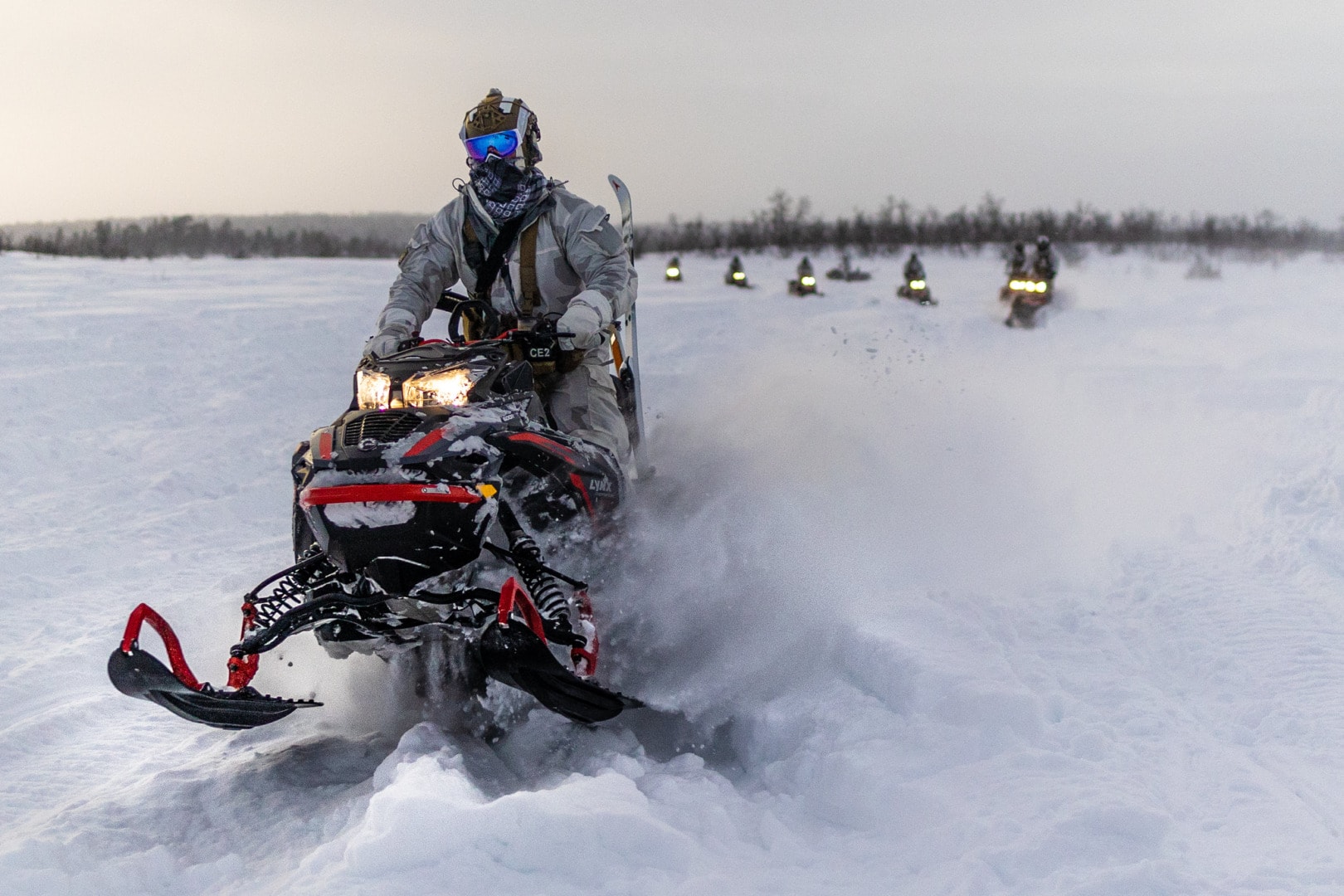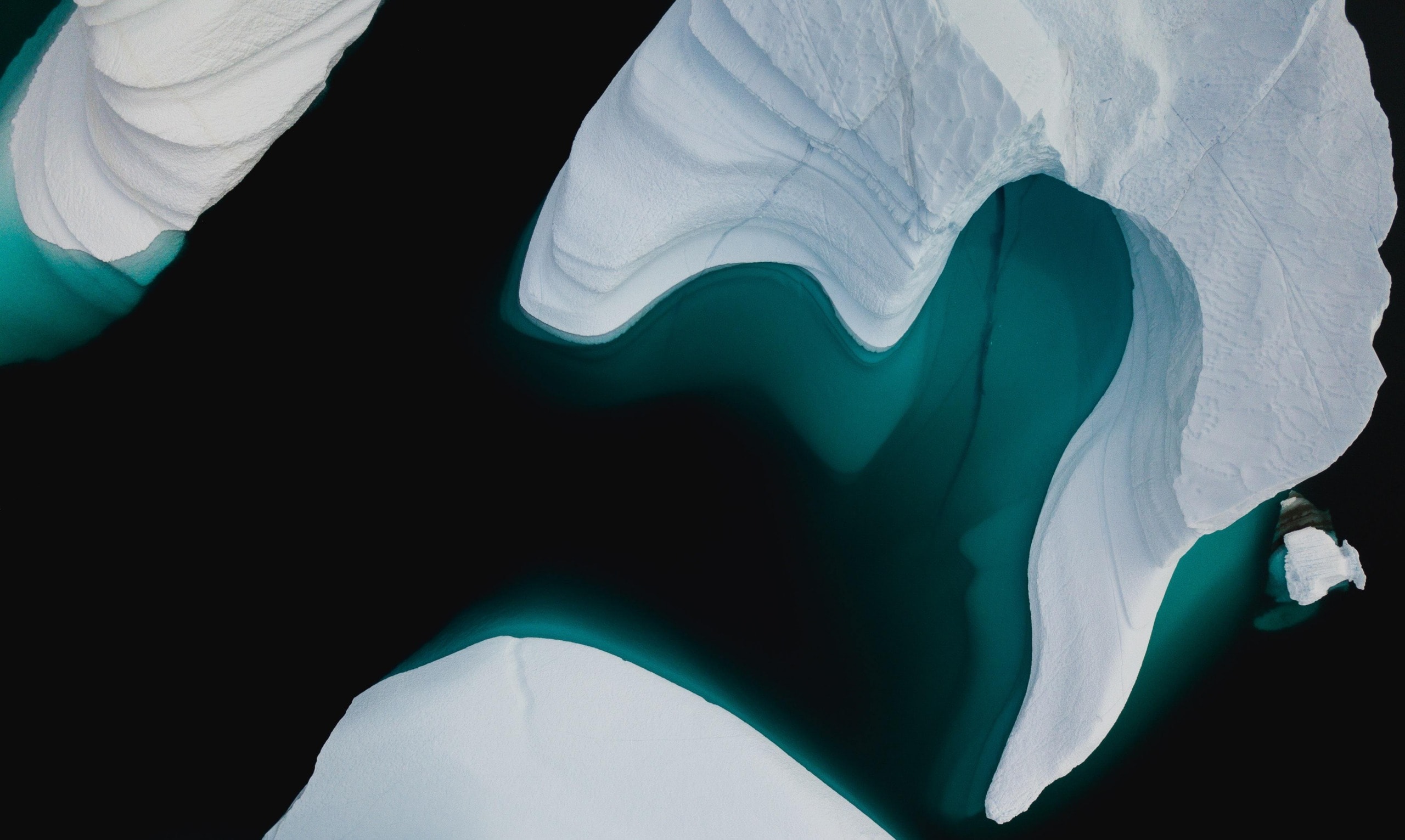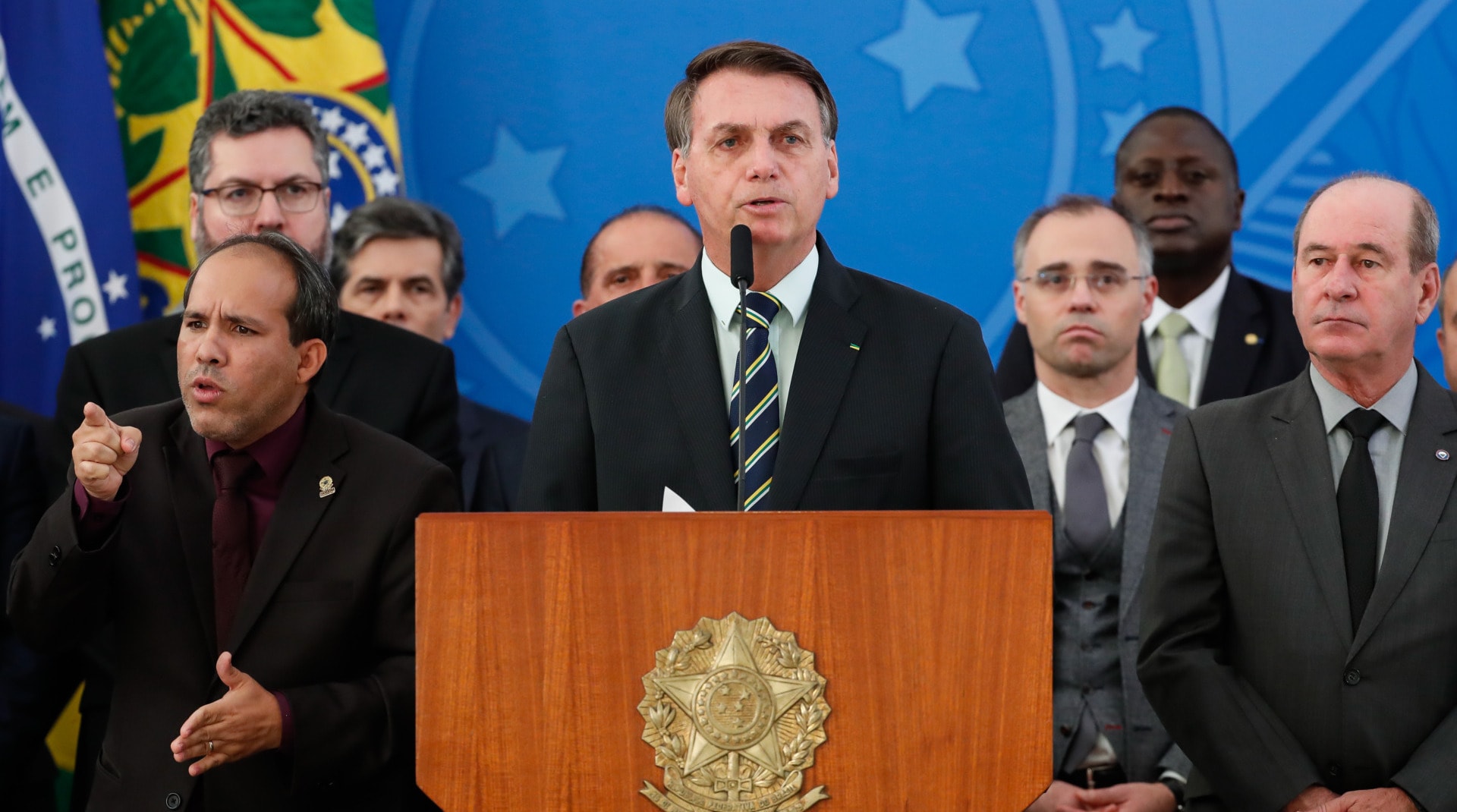Updated March 1, 2022: This morning, the big news is the satellite images of a 64 km-long convoy of Russian military vehicles headed for Ukraine’s capital Kyiv as the war in Ukraine is into its 6th day. All eyes are on what will happen next in Kyiv, as the convoy is just 20 km from the town center and civilians, pummeled so far by bombardments that have even aimed at schools and hospitals, are getting ready for street fights in what could become one of the most ferocious and devastating wars in European history.
Turkey has closed the Dardanelles straits and the Russian fleet is not likely to be able to enter the Mediterranean without eliciting an instant and full response from NATO forces.
But what about the Arctic? Should the war continue and extend to the rest of Europe – an impossible and terrifying perspective – it is clear that Russia would have a clear path to Scandinavia, Germany and the rest of the continent via the northern route that one always ignores and forgets about: The Arctic.
This article was published first in April 2020 – but its main argument, that a battle is certain to develop around control of the North Pole, is, unfortunately, more relevant than ever.
Updated 21 April 2020. News of a mysterious deep-sea Russian submarine accident off the coast of Norway is adding a new sinister twist to the “scramble for the Arctic”. It would seem, according to a recent article in the New York Times (here) that Russia, rather than confronting NATO directly in a war it is sure to lose, has opted to give itself the possibility to “scramble” (and cut up) communication cables lying on ocean floors. In yet another bid to disrupt world information flows and gain the upper hand in a confrontation over the Arctic (or, for that matter, over any other issue). So expect a new front in the information war Putin is waging against the West.
The arctic ice is melting, a climate change issue that portends massive geopolitical changes. There is an ongoing “scramble for the Arctic” just like there was a “scramble for Africa” in the 19th century.
Both driven by the same lust for riches in the ground.
As long ago as 1949, when the Soviet Union had already detonated its first plutonium bomb and developed a long-range plane to drop bombs, the TU-95 Bear bomber, Canadian historian and diplomat, Hugh Keenleyside, memorably said:
“What the Aegean Sea was to classical antiquity, what the Mediterranean was to the Roman world, what the Atlantic Ocean was to the expanding of Europe of Renaissance days, the Arctic Ocean is becoming to the world of aircraft and atomic power.”
What came next was the development of a network of radars, the Distant Early Warning Line in the early 1950s, replaced at the end of the 1980s with the North Warning System.
And now the Arctic has become “it”, the fighting ground of the 21st century.
We were all amused by Trump’s seemingly absurd attempt last summer to buy Greenland. And nobody was surprised when the Danish Minister rejected the offer, noting the time for big land purchases was over. Indeed, the last time the U.S. bought a big piece of land from another country was in 1867, when it bought Alaska from Russia.
Unfortunately Trump’s move was not so absurd. And it’s a sign of the times, the sign of a possible upcoming conflict, the first in the 21st century that could be played out on a global scale.
Yes,this is serious. It could really lead to World War III.
For a very simple reason: All the major world powers today are involved, the U.S., Russia, China and Europe (via Finland, Norway, Denmark, Sweden). And, buried under the Arctic ice, the stakes are enormous.
With climate change, that ice is melting fast. Global warming is opening up a new frontier. The underground riches are emerging in full view. The Arctic is estimated to hold about 30% of the world’s natural gas reserves and 13% of oil reserves.
In the diagram: Arctic estimated natural gas and oil reserves Source: Business Insider, visual capitalist Jeff Desjardins’ work April 7, 2016
In addition, there are huge deposits of minerals such as zinc, iron and rare earth metals that could be exploited – the latter could weaken China’s position as top supplier of rare earth metals that are crucial in electronics and many other industries.
The matter of the Arctic is deeply worrying because it carries within itself the seeds of a global conflict. Perhaps not now, but as soon as global warming has taken hold, opening up the Arctic.
There are no international organizations concerned with the Arctic except for the Arctic Council and no rules or regulations applying to it except for one maritime regulation, the EEZs.
The Exclusive Economic Zones (EEZs) give jurisdiction to every coastal country in the world over natural resources in an area extending 200 nautical miles into the sea. The EEZs apply to the Arctic too. Though the EEZ treaty, a UN Convention (December 1982), was never signed by America, in practice the U.S. President at the time (Reagan) found that it was in the interest of the U.S. to respect it.
The Arctic Council is an intergovernmental forum pulling together all eight Arctic coastal countries. When disagreement explodes there, it means rivalries have come to a head. Heralding nothing good for world peace.
Why the “scramble for the Arctic”: The allure of underground riches and new shipping routes
The race is on. Ugly. And dangerous. Everyone is scrambling for as large a piece of the Arctic pie as they can grab. The underground riches of the Arctic are well-known and unsurprisingly, the countries most excited at the thought of exploiting them is Russia.
Russia is exploiting minerals, drilling for oil and has planted a flag under the North Pole in 2007 to claim it. This in total disregard of the EEZs regulations. And in 2015, Russia submitted a bid to the United Nations claiming vast territories in the Arctic Ocean, some 1.2 million square kilometers — more than 463,000 square miles — of the Arctic sea shelf, which extends more than 350 nautical miles from the shore.
In addition to Russia, the U.S. Denmark, Canada, and Norway have all attempted to assert jurisdiction over parts of the Arctic.
But that’s only part of the story.
There is another part that is equally important in geo-political and economic terms. Melting arctic ice is opening new trade routes, from Europe to East Asia, notably the Northern Sea Route (NSR) linking eastern Siberia to the North Atlantic. Costs and time are cut like never before. Sailing a cargo ship from China to northern Europe via the NSR shortens the trip by 10 days, compared with the same journey through the Indian Ocean and Suez canal.
For an immense country like Russia, historically landlocked by Arctic ice, the opening of the NSR is not just a matter of new, faster shipping routes. It is much more than that: It opens unexpected and exciting economic growth prospects. The point is that Russia, suddenly, is no longer a landlocked country. For example, in August 2019, the BBC reported that Russia was floating in Murmansk a nuclear power plant to sail across the Arctic on the Northern Sea Route, all the way to Pevek. The purpose? Deliver energy in remote areas wherever needed, for example to power the Chaun-Bilibin mining complex in Chukotka, which includes gold mines.
China, even though it is far away from the North Pole, is in on the game. The sea route on top of the world offers obvious extraordinary advantages. And China has happily used it over the last five years, calling it “the Polar Silk Road”.
China hasn’t stopped there. It is also cultivating its special friendship with Russia to look for energy sources. For example, it is drilling for gas 3000 miles from home alongside the Russian giant Gazprom, in the Kara Sea off Russia’s northern coast. And it is establishing fruitful collaboration with other Arctic countries. It is prospecting for minerals in Greenland and it is looking to partner with a Finnish company to lay a new undersea internet cable to connect Asia with Northern Europe.
What happened at the Arctic Council this year: With cooperation jeopardized, a scramble for the Arctic is unleashed
Ever since the Council was founded in 1996, there has always been a joint communiqué at the end of every annual meeting. This year, for the first time, it didn’t happen. There was no joint communiqué issued at the end of the annual meeting held in Finland in May. Because the United States refused to sign.
The problem is that the lack of joint communiqué sends out the wrong signal, it jeopardizes cooperation. So what happened?
It appears that the problem was a matter of wording over climate change, with the U.S. contesting that climate change was a “serious threat to the Arctic”. The meeting’s purpose this year had been to frame a two-year agenda “balance the challenge of global warming with sustainable development of mineral wealth. Instead of agreeing on the agenda, there was just a “brief statement” repeating the Arctic states’ commitment “to sustainable development and the protection of the Arctic environment”. Empty words.
Actually, the disagreement went beyond a matter of language in the proposed communiqué. The US State Secretary Mike Pompeo complained that there was no collaboration from Russia. He assailed China accusing it of “aggressive behavior” in the Arctic and pointed to similar Chinese actions in other parts of the world. Some delegates and experts on China thought he was exaggerating, that China (for now) is not militarily involved in the region nor does it have any territorial claims.
Yet, there is little doubt that he was right in calling a spade a spade: There is scant, collaboration from Russia and China has a long-run agenda to gain global influence. It is indeed aggressively pursuing its Belt and Road initiative – including in the Arctic.
Why stopping a joint communiqué is a bad move for peace
Not issuing a joint communiqué at the end of an official meeting is a bad move when dealing with an organization like the Arctic Council, an intergovernmental forum with a severely limited mandate.
In such cases, where there are no binding rules one can resort to, a joint communiqué is a major tool of peer pressure, possibly the only one. Since it is designed to be picked up by the media that will spread the message. So no communiqué, no message.
This came out even more clearly at last summer’s G7 meeting held in Biarritz, France. French President Macron decided the meeting should not issue a final joint communiqué in deference to Trump. Who had famously reneged on his signature once he had left the last G7 meeting in Canada, causing a major diplomatic tussle with Canadian Prime Minister Trudeau.
The result of this year’s G7? A total flop. It may have been a personal success for Macron in the role of a European unity and multilateralism champion, as the New York Times put it and the French press dubbed it a success.
But there’s no getting around the fact: This was mere chit chat among the world’s top leaders. The only concrete result was the offer to help Brazil fight the Amazon fires. An offer first turned down by Bolsonaro with insulting words for Macron. And that he accepted only later if Macron “withdrew his insults”:
Is putting a stop to joint communiqués a new diplomatic tool of the Trump administration?
One may well wonder whether that is the case, but most likely it is not. There is no doubt, though, that it is very effective in helping to annul the usefulness of international meetings. And we know how much Trump despises international organizations, from NATO to the UN. When there’s no communiqué, the media has nothing to report. No peer pressure is exercised. Countries that object to collaboration get to go scot free.
But Pompeo, paradoxically, did something useful. He brought out the fact that the Arctic Council is not an institution equipped to address the Arctic issue and solve it. This signals a major change: Where issues so far had been kept “frozen”, they are now unlocked. No holds barred. And Russia and China (for now) walk out the winners.
Russia and China got a greenlight: They now know that they can go ahead with their economic exploitation plans and nobody can stop them in the name of sustainability and climate change.
There’s a lesson here that should be learned – and learned as soon as possible: Much more than a shapeless, weak and chattering multilateral forum to “promote dialogue” is needed. We are soon getting to the point where we are past “dialogue”.
Any solution to regulate the Arctic?
None is currently available. The problem is that the race for the Arctic is on and there’s no suitable international forum or set of rules to deal with it. The Arctic Council is practically a dead letter. There is no international resolution system to address political issues. Meanwhile, political tensions are set to rise unchecked.
Most of the world isn’t aware of what is going on, the media is not sufficiently reporting on it – except for a few brave journalists here and there.
The United Nations does have something – it always has something on every possible issue. But what it has, in this case, is very little and not operational.
In practice, the only existing forum for debate is the Arctic Council and it has no powers. The obvious solution is to revive it. Give it new rules and a broadened mandate.
But for that to happen, there is a need for public pressure on participating governments. Go tell Greta Thunberg!
It won’t be easy to wake up the public to the issue: Some information sources like the Arctic Institute maintain that all is well in the best of worlds and that international cooperation continues unabated while all the countries in the Arctic neighborhood have already claimed whatever they could obtain via the Land of the Sea Regime. Furthermore, it’s a sub-regional issue with no impact on the rest of the world.
How credible do you believe such arguments are? When Hitler invaded Austria, that too was considered by Britain and France a “regional issue” of such limited import that they could live with it. We all know how that ended.
Editors Note: The opinions expressed here by Impakter.com columnists are their own, not those of Impakter.com — In the Featured Photo: Admiral Gorshkov Russian frigate, 10 July 2018 source:Ministry of Defence of the Russian Federation














